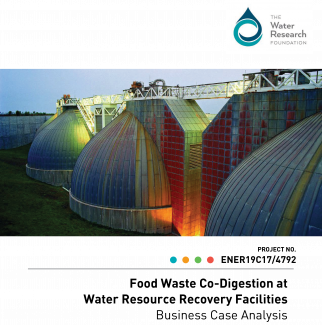ELI Report
Consensus Report Study finds courts are largely in agreement on climate science, but jurists remain reluctant to wade into politics
Climate change is a source of political controversy in the United States, and climate skepticism — or doubts about the basics of climate science — has periodically emerged in public debate. At the same time, U.S. courts in several high-profile cases, such as Juliana v. United States and City of Oakland v. BP p.l.c., while not finding for petitioners, have accepted as authoritative the science behind climate change, including its conclusions that the climate is warming, human activities are driving these changes, and that climate change will have disastrous consequences.
Given the growing number of cases involving climate change, the question remains whether these court decisions are representative of a broader trend in the judiciary or whether they are outliers. With support from the Institute’s Board of Directors, ELI commissioned a report, Climate Science in the Courts: A Review of U.S. and International Judicial Pronouncements, to analyze this question.
Authored by ELI Visiting Attorney Maria L. Banda and published in April, the report examines judicial pronouncements in climate-related proceedings since 2015, including in civil, administrative, constitutional, and criminal law matters, in the United States and in a dozen foreign jurisdictions.
The report finds vast consensus by U.S. and international courts on the causes, extent, urgency, and effects of climate change. Courts have described the science behind climate change as “substantial,” “copious,” and “overwhelming,” and have established a basic causal chain between human activities and current climate risks.
This consensus holds across different types of cases, including nuisance complaints, constitutional claims, and administrative law proceedings. It also holds true across state and federal courts in the United States and internationally.
This finding represents a major shift since early climate lawsuits, where climate skepticism was still relatively common among both judges and litigants. Courts have shifted from doubting climate science to unequivocally accepting the evidence for climate change.
One reason for this shift is the evolving nature of climate science. Federal agencies like the National Aeronautics and Space Administration, the Environmental Protection Agency, and the National Oceanic and Atmospheric Administration have generated a vast amount of climate data in recent years to underpin courts’ analyses. Courts in other countries have reviewed much of the same scientific evidence, including reports by the Intergovernmental Panel on Climate Change. In this sense, climate science has acted as a lingua franca across courts.
However, judicial consensus on climate science has not necessarily translated to judicial intervention. U.S. courts have remained generally conservative on climate action, frequently deferring to government agencies to address climate-related issues. This appears to be the case especially when it comes to constitutional or civil claims, which tend to use new legal theories or challenge threshold issues such as standing.
Judicial consensus on climate change plays an important role in shaping public understanding about climate science. Courts are among the most respected public institutions, and are often trusted to separate fact from fiction in a democratic society. Greater understanding of judicial conclusions on climate science could help move public consensus to align with this emerging judicial consensus. Finally, public awareness of how the courts analyze climate data may increase government accountability and galvanize political leaders to act on climate change.
Institute and partner work with Bozeman on water scarcity
With the support of the Turner Foundation, the Alliance for Water Efficiency and the Environmental Law Institute have worked with the City of Bozeman, Montana, to amend a local ordinance in a manner that facilitates water-neutral growth.
The recommendations by ELI and AWE were based on the Net Blue Ordinance Toolkit, a guide written by the two organizations. The Toolkit offers examples of water-offset ordinances from around the country; a Model Ordinance Worksheet that guides users through the development of a water-offset ordinance tailored to their political climate, legal framework, and environmental conditions; and an Offset Methodology Workbook that provides strategies for evaluating and selecting options to offset projected new water demand. Water-neutral growth ordinances can offset additional water demand by either requiring or incentivizing water-efficient retrofits of existing development. These measures can include fixture and appliance replacements, rainwater harvesting, and stormwater capture.
The city of Bozeman served as a Net Blue Partner Community, advising on the development of the Toolkit. The city has experienced rapid growth but is in an area with limited water resources. Capitalizing on the existing partnership between the city, AWE, and ELI, the groups implemented the Net Blue Toolkit there, collaboratively developing revisions to a simple water rights transfer and in-lieu fee ordinances.
Beginning in early 2019, ELI and AWE staff worked with Bozeman city planners and attorneys on various concepts and drafts of both the revised ordinance and its associated manual. The Bozeman City Commission approved the ordinance revisions in August. Revisions to the water manual, which houses the details of the ordinance’s implementation, are still in progress.
As the Toolkit notes, water managers in 40 out of 50 states anticipate water shortages within the coming years. This effort with the city of Bozeman represents a successful application of ELI’s research and analysis in local government policy. The hope is that Net Blue’s adoption in Bozeman will inform other local governments and encourage them to adopt similar ordinances.
Food waste initiative strives to improve community composting
The Nashville Food Waste Initiative, led by the Nashville-based nonprofit Urban Green Lab with support from the Natural Resources Defense Council and the Environmental Law Institute, recently launched a project to develop community composting training and pilot sites in Nashville. Through this project, the Institute for Local Self Reliance, a national leader in community composting, is collaborating with NRDC to bring training and technical support on community composting to Nashville.
In 2015, NRDC launched the Nashville Food Waste Initiative as a pilot project to develop tools, policies, and strategies to prevent food waste, rescue surplus food to those in need, and digest what’s left to build healthy soil. ELI Senior Attorney Linda Breggin served as the project coordinator for several years and continues to support the initiative as senior strategic advisor.
The community composting initiative follows up on a recent NFWI study on community composting, which highlights benefits and opportunities related to re-establishing community composting in Nashville. Community composting is a valuable part of a resilient food scrap recycling infrastructure, offering a relatively cheap and quick way to reach higher diversion potential than practices like backyard composting. It also provides a huge range of environmental and social benefits, such as engaging communities in zero waste practices, increasing demand for and interest in composting, and providing useful skills and job training.
Following the release of this report, the Initiative convened local stakeholders last winter to discuss ways to overcome barriers and identify resources for community composting. Groups expressed interest in managing sites, providing land, and hosting volunteers.
Building off this initial interest, the community composting initiative will lay the groundwork for a robust community composting network, targeting often overlooked and under-resourced communities, and train practitioners and future trainers.
Through the end of 2020, the first phase of this project will focus on identifying and providing technical support to composting demonstration sites and community composting pilot projects. Concurrently, a series of live webinars and online training modules will build interest and skills for community composting within the greater Nashville community.
ELI in Action: States at front lines of transition to renewables
ELI and the American University Washington College of Law Program on Environmental and Energy Law co-sponsored a webinar, State Approaches to a Just Transition, to explore how states protect frontline communities while advancing the transition to a renewable energy economy. The panel featured four experts advancing a just transition in the District of Columbia, Illinois, and New York. Speakers provided lessons learned from climate legislation, including the New York Climate Leadership and Community Protection Act, the Illinois Future Energy Jobs Act, and the District of Columbia’s Clean Energy Omnibus Amendment. The discussion highlighted the implications of these policies in addressing the dual crises of racial injustice and a global pandemic.
❧
Each summer, ELI convenes a complimentary seminar series that offers an introduction to the legal and policy foundations of environmental protection in the United States. Taught by experts in their fields, the ELI Summer Schoolseminars cover major environmental statutes such as the National Environmental Policy Act, Clean Air Act, and Clean Water Act. The 2020 Summer School series was the second year to host a session on environmental justice, which will become a mainstay portion of Summer School moving forward.
This year’s Summer School was also the first to be held remotely due to COVID-19. On average, each session received about double the number of registrations compared to last year’s sessions. In total, over 3,900 participants registered for the 2020 Summer School series.
❧
The Trump administration has taken dramatic and sweeping steps to remake federal environmental regulation. A recent ELI report, Environment 2021: What Comes Next? offers a detailed analysis of how these deregulatory initiatives will affect environmental protection in the coming years.
Authored by Senior Attorneys James M. McElfish and Jay Austin, the report helps environmental practitioners, policymakers, and the public understand the scope and significance of recent changes and consider future directions for the regulatory system. The report makes no assumptions about this fall’s electoral results, but explores possibilities for various regulatory reform efforts under different electoral outcomes. The report is available for download on the ELI website.
❧
As the first part of a webinar series on environmental issues affecting Indigenous peoples, ELI convened a webinar titled Fighting Fire With Fire: Restoring Traditional Indigenous Practices for Ecological Stewardship. The webinar, featuring leaders from the U.S. Forest Service, California Department of Forestry and Fire Protection, and the Karuk Tribe, explores opportunities for tribes to collaborate with state, local, and federal authorities to provide prescribed fires and fire-related services on traditional lands under federal jurisdiction.
The speakers provided an overview of wildfire management at the federal, state, and tribal levels, including current efforts and opportunities for collaborative activities between tribes and governments. In a concluding discussion, speakers noted the importance of recognizing the value of traditional ecological knowledge, understanding a tribe’s history and context, and building relationships when entering collaborative agreements. Intertribal organizations innovating in tribal forest management include the Intertribal Timber Council and the National Indian Carbon Coalition.
❧
In August, the Institute announced the inaugural class of the Jim Rubin International Fellowship, a program to support rising environmental lawyers from developing countries. The fellowship honors the legacy of Jim Rubin, a highly respected attorney, environmental advocate, and devoted public servant.
This year’s fellows, Ginary Tatiana Gutiérrez Robledo of Colombia and Junhong Li of China, will work with ELI staff on cutting-edge issues of environmental law. Gutiérrez Robledo was most recently an attorney at the Inspector Attorney General Office in Colombia, focusing on government compliance, education, community empowerment, and environmental justice. Junhong Li previously represented local communities in public interest litigation at the Center for Legal Assistance to Pollution Victims at the China University of Political Science and Law.
The Judiciary accepts climate science, ELI study finds.


